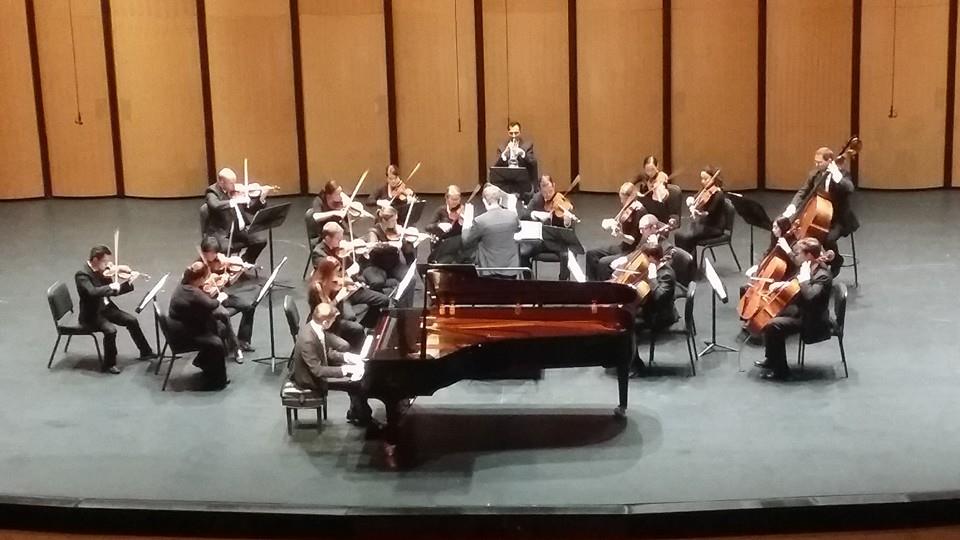The piano concertos of Shostakovich, like those of Mozart, are most at home in a relatively intimate venue—as was demonstrated once again when the Dallas Chamber Symphony opened its 2014-15 concert season in the 750-seat Dallas City Performance Hall, with the Russian composer’s First Piano Concerto as the centerpiece of the evening.
Dallas-reared pianist Alex McDonald, a graduate of the New England Conservatory and the Juilliard School, and currently a member of the faculty at Texas Woman’s University, joined the ensemble of twenty-two strings as featured soloist, with the orchestra’s artistic director Richard McKay conducting and Costa Rican-born trumpeter Oscar Garcia Montoya, who is also a member of the Fort Worth Symphony, performing the trumpet part. In this concerto, there are times when the instrument takes on a role almost equal to that of the piano.
While this particular concerto can be made to work in a large concert hall, its greater effectiveness in a smaller room was obvious from the trumpet volley that opens the work. It’s not just the lean orchestration of the piece that fits so nicely in the smaller room with a smaller audience. It’s that the ideas, ranging from impish to impassioned in this miniature masterpiece, come across most clearly at close range. Pianist McDonald soared across the breadth of emotions Shostakovich poured into the work, whether in the arching lament of the Lento or the madcap humor of the finale. Trumpeter Montoya’s brilliant timbre ideally complemented McDonald’s intense reading. The only minor distraction from a nearly perfect performance was the placement of Montoya almost completely out of sight behind the piano.
Conductor McKay and the orchestra had opened the concert with early-twentieth-century British composer Peter Warlock’s Capriol Suite for Stings, a set of six evocative, seductively brief movements based on Renaissance dances. Founded in 2011, the orchestra here demonstrated a continually improving precision and comfort in a room that can be unforgiving. The Warlock Suite provided ample opportunity for McKay to show off a wonderful ability to evoke the special atmosphere, at once modern and archaic, that the composer created here. Renaissance harmonies abounded, tinged with just the right spice of 20th Century dissonance and bi-tonality. It was brought out at just the right level by McKay.
The final work of the program, Dvorak’s Serenade in E for strings, proved to be not only another fine showpiece for the orchestra and conductor, but an excellent counterweight to the twentieth-century pungencies—what one might now, eight decades later, think of as early musical modernism. That includes the work of Warlock and Shostakovich. Here, Dvorak evades the Slavicisms more readily associated with his music, but retains his miraculous gift for melody and unfailing craftsmanship as a composer of music for string ensemble. The Dallas Symphony continued to make a strong case for its presence in community.
The orchestra and conductor McKay had, incidentally, provided instrumental accompaniment for a portion of the presentation last weekend at Dallas City Performance Hall by the Bruce Wood Project modern dance ensemble. Hopefully, that highly successful collaboration can continue. Indeed, the combination of the Dallas Chamber Symphony and the Bruce Wood Dance Company, would, with proper funding, make an ideal cultural ambassador for the city to major urban centers in the United States and beyond.






